Apart from bears, wild boars, packs of wolves, sharks and some crazy drivers. Spain has other dangerous and small nasty creatures on offer. Here are a few people should be aware of and their children and pets in particular should be protected from. The Procession Caterpillar, Mediterranean Scorpion, Snake, Spiders, and Fire Salamanders to name a few, although to be honest I've been here many years and I am yet to see many of them.....but they are out there!
Caterpillars (Processional Pine Caterpillars) :

Pine Caterpillars (Latin name thaumetopoea pityocampa) are probably one of the most unpleasant creatures you will find in Spain, certainly in areas where pine trees grow in abundance. They are found throughout the warmer regions of Southern Europe, the Near East and North Africa. As well as causing much damage to pine forests, they are a major danger to animals and, to a lesser degree, human beings.
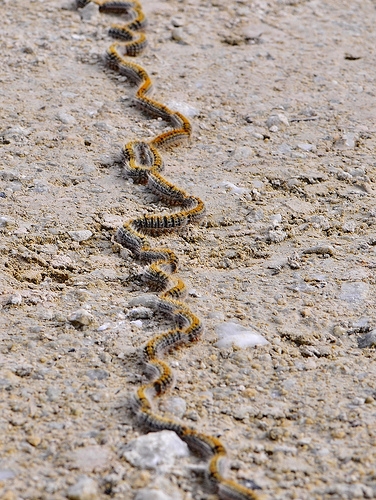 Do not touch them. Warn your children that they are not like the friendly English caterpillars. The very fine hairs on these creatures are poisonous and most dangerous. They can be seen living in silk cocoon style nests hanging in the pine trees to which they are most harmful, stripping them of their pine needles. When hungry, they leave their cocoon to seek another uninfested tree on which to feed. They travel nose to tail in a line, hence the name Processional. They are most noticeable from January to mid April and are at their most dangerous in mid/late February. The caterpillars are often seen in the evenings, walking in procession from tree to tree.
Do not touch them. Warn your children that they are not like the friendly English caterpillars. The very fine hairs on these creatures are poisonous and most dangerous. They can be seen living in silk cocoon style nests hanging in the pine trees to which they are most harmful, stripping them of their pine needles. When hungry, they leave their cocoon to seek another uninfested tree on which to feed. They travel nose to tail in a line, hence the name Processional. They are most noticeable from January to mid April and are at their most dangerous in mid/late February. The caterpillars are often seen in the evenings, walking in procession from tree to tree.
If they drop onto you or your pet, don't brush them off with your hands because the effect is most unpleasant, causing great irritation, rash and pain. Dogs, cats and people can suffer from shock. The hairs of the caterpillars are still virulent even when the creatures are dead. Do not hit them with sticks because hairs flying in the air are just as dangerous. Burn them, but be careful of floating hairs. If the caterpillars are in the tree cocoon state, first spray the nest with hair spray (to seal down the hairs), cover the cocoon and the affected part of the branch with a plastic bag, cut down the branch, place it on clear ground and burn it.
If the caterpillars are on the ground marching, it is better first to spray them with lighter fuel and then set them alight. This reduces the risk of flying hairs.
Take care to only do this where you cannot inadvertently start a forest fire because during the summer months the undergrowth and trees are very dry.
If you live near pine trees, it is recommended that you keep Anti Histamine tablets handy as an early treatment. In particular, avoid ingesting the hairs. Dogs are most at risk by sniffing the ground where the caterpillars have marched.
Take particular care with your eyes. If affected the result is serious, causing pain and swelling similar to a bad case of conjunctivitis.
Treatment: If a person or animal shows signs of shock, get them to a doctor, hospital or vet immediately.
If you have children and are considering buying property, take the above details into consideration.
Mediterranean Tiger Centipede – Escolopendra tigra :
 12.03.23.jpg)
Found throughout Southern Spain and North Africa. The Mediterranean Tiger centipede is largest in Europe and can grow up to 150mm in length. The centipede’s markings change, depending on location.
Generally they are yellow with black stripes, hence the name tiger. Nocturnal and venomous; they can give a nasty bite. Rarely lethal, unless algeric to the venom, their stings are none-the-less extremely painful and require medical assistance. They were given a toxic rating of two.
Mediterranean Scorpion (Buthus Occitanus - Escorpion Amarillo) :
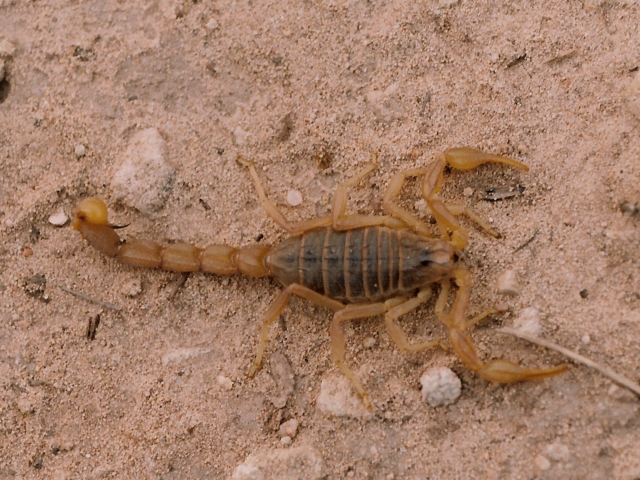
The most common scorpion in Spain is the Mediterranean scorpion (Buthus occitanus, escorpión amarillo or just alacrán) and though its North African cousin is more dangerous, it will still give you an extremely nasty sting. You might want to think about wearing boots and thick socks if you plan to hike in dry rocky areas (most of wild Spain) as they are by no means rare. The female will make a meal out of the male if food is short on the ground. The European black scorpion is also present in Spain, preferring more northerly and wetter areas. It's sting is short-lived. Scorpions have a bent for resting in your shoes, so be careful.
The European Black Scorpion (Euscorpius Flavicaudis) :
2.jpg)
Mainly in the northern part of Spain. The sting is very painful but not deadly to humans.
Snakes:
There are a total of 13 snakes present in Spain of which five are venomous. These are:
Seoane’s viper (Vipera seoanei – víbora de Seoane)
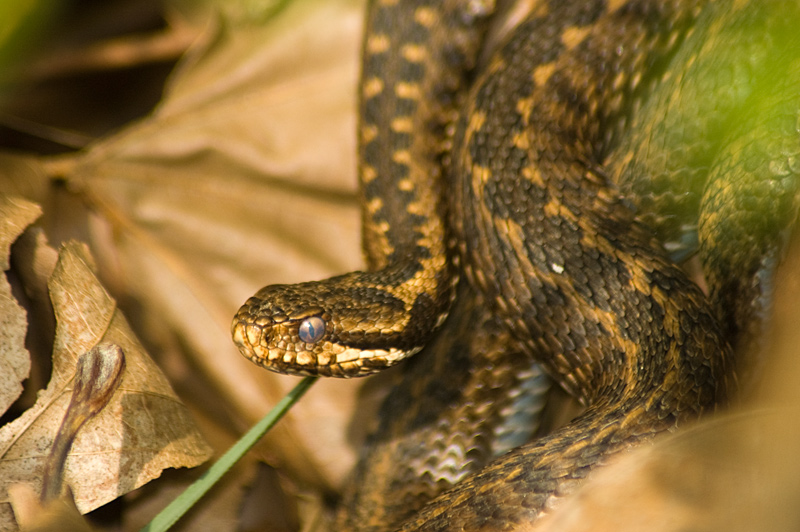
Asp viper (Vipera aspis – víbora áspid)
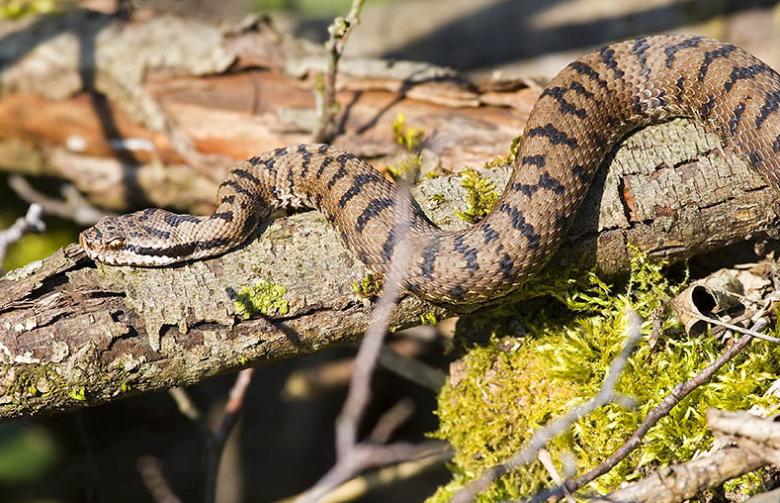
Snub-nosed or Lataste’s viper (Viborade lataste – vibora hocicuda)
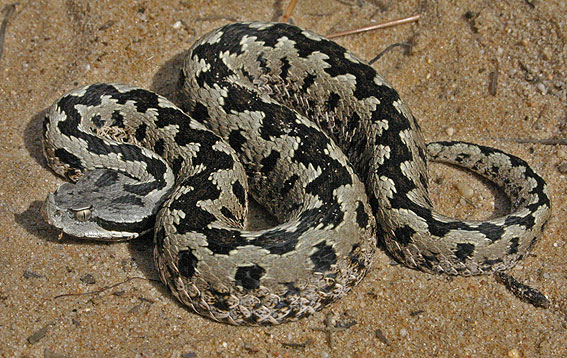
False smooth snake (Macroprotodon cucullatus – culebra de cogulla)
 copia.jpg)
Montpellier Snake (Malpolon monspessulanus – culebra bastarda or de Montpellier)
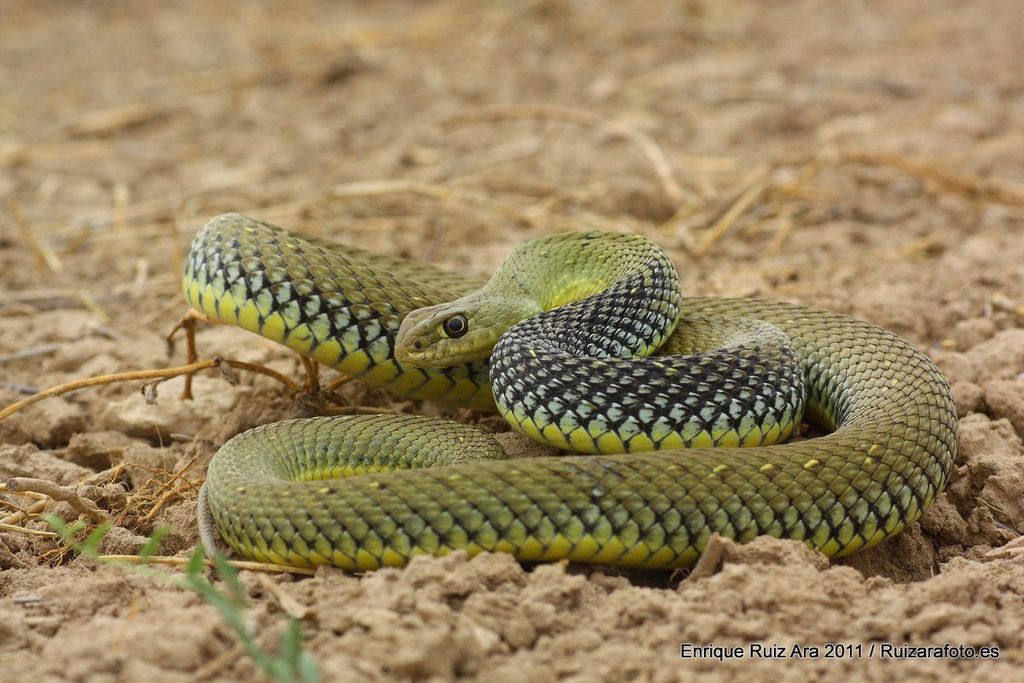
Seoane's viper lives in Galicia, León, the Cantabrian coastal strip (Cornisa Cantábrica) and the Basque Country. Confusingly some authors class Seoane's viper as a subspecies of the common viper or adder (Vipera berus - víbora europea) and, more confusingly still, some experts believe both exist in northern Spain.
The Asp Viper is restricted to the Pyrenees. Lataste's viper or the Snub-nosed viper is present throughout the rest of the Peninsula , though like most snakes, nowhere is it common. It takes it's name from the prominent horn between its eyes. It is grey, short (around 50cm) and is distinguished by its triangular head and the zigzag pattern on its back, although this varies amazingly from one individual to another. It lives in dry, rocky areas, away from human habitation,
The other two snakes are not so dangerous, but watch out for the 2-metre long Montpellier snake. It is blue with a white underbelly -don't go picking one up to check- and has prominent ridges over the eyes. However, the position of its venom fangs means that you would be unlucky to have poison injected into you, and if you are, its venom is much weaker then the vipers.
If you are bitten by a snake, remain calm and seek medical attention immediately. Bites only occur in the spring and summer as snakes hibernate. Of the estimated 50 snakebite deaths a year in Europe, only 3-6 occur in Spain, so don't worry too much. More people die from bee and wasp stings. The Canaries are snake-free, and only the milder False smooth snake is found in the Balearics, probably introduced there by the Romans.
Spiders :
There are more than 1,700 species of spider in Spain but only three are in way harmful to us. By far, the most dangerous is the black widow (Latrodectus tredecimguttatus) which gives a medically-complex and painful bite though it is not fatal. They are commonest in Valencia and Andalucía, and they are a problem in the greenhouse estates of Almeria .
The sting of the black widow, along with hysteria, was often responsible for the condition of ‘tarantism’, though at the time the much less-potent but more fearsome-looking true tarantula or wolf spider (Lycosa tarantula) was blamed. Wolf spiders are no relation to the much larger bird spiders of South America which have inherited the name, and their sting is weak. The hysteria began at some time during the Middle ages in Taranto in Southern Italy from where it spread out, reaching Spain in the 15th century. Victims were cured by making them dance to a frenzied music: the tarantela. As late 1875, the Spanish Royal Faculty of Medicine was recommending such antics. Other techniques for expelling the spider demon were less kind to the victim. In Corsica , the victim was placed in a sweltering oven, while on the Island of Hierro in the Canaries sufferers were treated with ‘internal doses of human excrement'. Old world tarantulas (wolf spiders) are found in arid zones such as Los Monegros in Aragon.
Their bite can be painful but not dangerous. However it is the Black Widow (Latrodectus mactans) and the Recluse spider that can cause most pain.

The Black widow is Spain’s most venous spider and considered to be one of most dangerous in Europe. The black widow is found throughout Andalusia. A close relative of Australia’s red black spider and is very similar in appearance.
With its black body and distinctive red spots, thirteen of them in total. The male spider usually measures 10mm, while the female is around 15mm – body length. Generally nocturnal, the spider’s prey tends to be other insects and but has been known to occasionally eat small rodents. The black widow spider has a particularly toxic venom, which can prove fatal. Its toxic rating was three.
The Recluse Spiders are found in parts of Spain but are less virulent than in other parts of the world and is 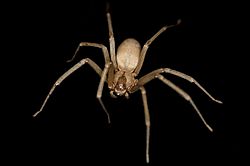 not lethal. Bites from this spider cause a tender blister to develop, characteristically with a “bull’s eye” appearance (a red centre). At the time a person is bitten, it is often hardly noticeable and it can be several hours before the venom to takes effect. Then, it is very painful.
not lethal. Bites from this spider cause a tender blister to develop, characteristically with a “bull’s eye” appearance (a red centre). At the time a person is bitten, it is often hardly noticeable and it can be several hours before the venom to takes effect. Then, it is very painful.
Fire Salamanders
(Salamandra salamandra)
Very distinctive don’t get to close to this creature, it can discharge poison.
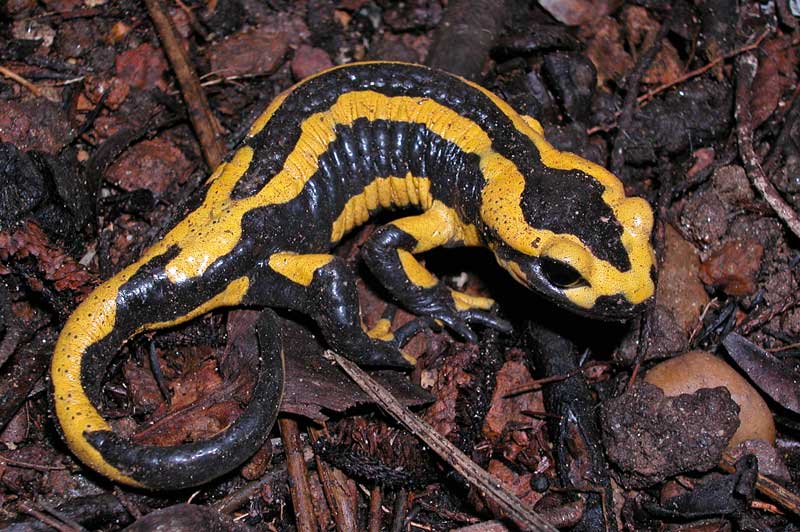
The Mosquito (Culicidae)
Encephalitis, Yellow fever, Malaria can be passed on via painful bites and now in Spain the bites can be even more painful thanks to the arrival of the Tiger Mosquito. The Tiger Mosquito is said to be aggressive, attacks in the daytime and resides in gardens. It can transmit a list of major diseases, Including Nile fever and Dengue.
Sand Flies (Leishmaniasis)
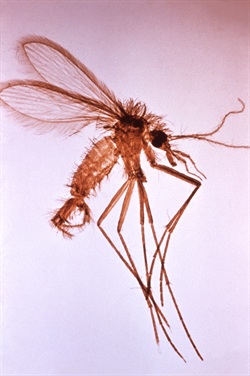 Normally found in gardens or wooded areas not as the name suggest exclusive to beach areas.
Normally found in gardens or wooded areas not as the name suggest exclusive to beach areas.
They are most active from dusk till down 2am to 4am August is the worst month. Painful bite and are dangerous to pets. Dogs can get Kala-Azule past on from dog-to-dog via its bite. A collar called ‘Scalibor’ can be worn to protect your dog and give over 90% protection from sand fly bites. The world health authority is researching into the possibility that the disease can be passed on to humans.
Ticks
As in most hot countries, Ticks are prevalent in Spain and they can transmit nasty diseases to your pet such 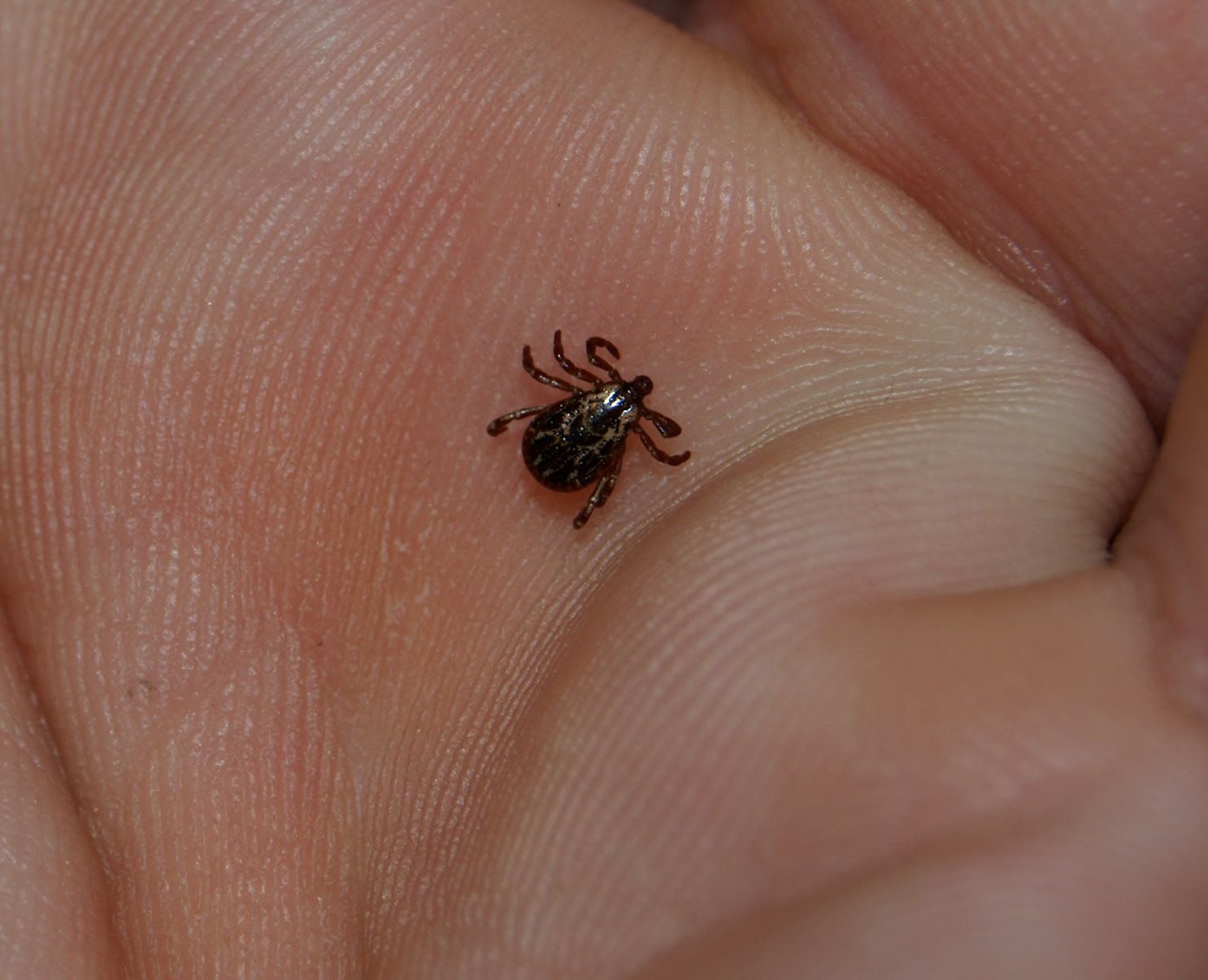 as canine Babesiosis and Ehrlichiosis. They can cause dogs and cats incurable damage which incurs lifelong administration of drugs. There is as yet no known cure. If you find one on your pet, if you find a tick attached to your skin, there's no need to panic. There are several tick removal devices on the market, but a plain set of fine-tipped tweezers will remove a tick quite effectively. According to the "Centre for Disease control and prevention" this is the procedure:
as canine Babesiosis and Ehrlichiosis. They can cause dogs and cats incurable damage which incurs lifelong administration of drugs. There is as yet no known cure. If you find one on your pet, if you find a tick attached to your skin, there's no need to panic. There are several tick removal devices on the market, but a plain set of fine-tipped tweezers will remove a tick quite effectively. According to the "Centre for Disease control and prevention" this is the procedure:
How to remove a tick
- Use fine-tipped tweezers to grasp the tick as close to the skin's surface as possible.
- Pull upward with steady, even pressure. Don't twist or jerk the tick; this can cause the mouth-parts to break off and remain in the skin. If this happens, remove the mouth-parts with tweezers. If you are unable to remove the mouth easily with clean tweezers, leave it alone and let the skin heal.
- After removing the tick, thoroughly clean the bite area and your hands with rubbing alcohol, an iodine scrub, or soap and water.
- Dispose of a live tick by submersing it in alcohol, placing it in a sealed bag/container, wrapping it tightly in tape, or flushing it down the toilet. Never crush a tick with your fingers.